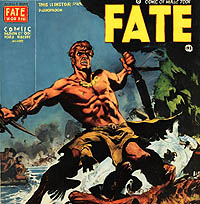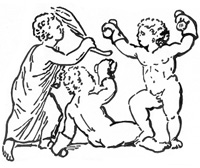An excerpt from So Her Master May Have Her Again
The following facts are sufficient to prove, that he who has the power, and is inhuman enough to trample upon the sacred rights of the weak, cares nothing for race or colour:—
In March, 1818, three ships arrived at New Orleans, bringing several hundred German emigrants from the province of Alsace, on the lower Rhine. Among them were Daniel Muller and his two daughters, Dorothea and Salomé, whose mother had died on the passage. Soon after his arrival, Muller, taking with him his two daughters, both young children, went up the river to Attakapas parish, to work on the plantation of John F. Miller. A few weeks later, his relatives, who had remained at New Orleans, learned that he had died of the fever of the country. [1] They immediately sent for the two girls; but they had disappeared, and the relatives, notwithstanding repeated and persevering inquiries and researches, could find no traces of them. They were at length given up for dead. Dorothea was never again heard of; nor was any thing known of Salomé from 1818 till 1843.
In the summer of that year, Madame Karl, a German woman who had come over in the same ship with the Mullers, was passing through a street in New Orleans, and accidentally saw Salomé in a wine-shop, belonging to Louis Belmonte, by whom she was held as a slave. Madame Karl [recognized] her at once, and carried her to the house of another German woman, Mrs. Schubert, who was Salomé's cousin and godmother, and who no sooner set eyes on her than, without having any intimation that the discovery had been previously made, she unhesitatingly exclaimed, "My God! here is the long-lost Salomé Muller."
The Law Reporter, in its account of this case, says:—
"As many of the German emigrants of 1818 as could be gathered together were brought to the house of Mrs. Schubert, and every one of the number who had any recollection of the little girl upon the passage, or any acquaintance with her father and mother, immediately identified the woman before them as the long-lost Salomé Muller. By all these witnesses, who appeared at the trial, the identity was fully established. The family resemblance in every feature was declared to be so remarkable, that some of the witnesses did not hesitate to say that they should know her among ten thousand; that they were as certain the plaintiff was Salomé Muller, the daughter of Daniel and Dorothea Muller, as of their own existence."
Among the witnesses who appeared in Court was the midwife who had assisted at the birth of Salomé. She testified to the existence of certain peculiar marks upon the body of the child, which were found, exactly as described, by the surgeons who were appointed by the Court to make an examination for the purpose.
There was no trace of African descent in any feature of Salomé Muller. She had long, straight, black hair, hazel eyes, thin lips, and a Roman nose. The complexion of her face and neck was as dark as that of the darkest brunette. It appears, however, that, during the twenty-five years of her servitude, she had been exposed to the sun's rays in the hot climate of Louisiana, with head and neck unsheltered, as is customary with the female slaves, while labouring in the cotton or the sugar field. Those parts of her person which had been shielded from the sun were comparatively white.
Belmonte, the pretended owner of the girl, had obtained possession of her by an act of sale from John F. Miller, the planter in whose service Salomé's father died. This Miller was a man of consideration and substance, owning large sugar estates, and bearing a high reputation for honour and honesty, and for indulgent treatment of his slaves. It was testified on the trial that he had said to Belmonte, a few weeks after the sale of Salomé, "that she was white, and had as much right to her freedom as any one, and was only to be retained in slavery by care and kind treatment." The broker who negotiated the sale from Miller to Belmonte, in 1838, testified in Court that he then thought, and still thought, that the girl was white!
The case was elaborately argued on both sides, but was at length decided in favour of the girl, by the Supreme Court declaring that "she was free and white, and therefore unlawfully held in bondage."
Notes
Throughout the slaveholding states of America [which included most northern states, where slave trafficking, not ownership, was prohibited] servants of house, shop or field feared nothing more than "being sold down the river." Whether one was a Virginia slave or a slave on the Ohio or Mississippi, when one was sold down the Ohio, Mississippi or James River, he was headed for Louisiana and his doom. Louisiana had the harshest climate and many of the cruelest masters, coming as they did from the Caribbean tradition. These German migrants were either misinformed, misled or desperate, to hazard New Orleans and environs. The memoirs of William Wells Brown and Solomon Northup are excellent sources for the reputation and conduct of slave trading "down the river."
America in Chains











